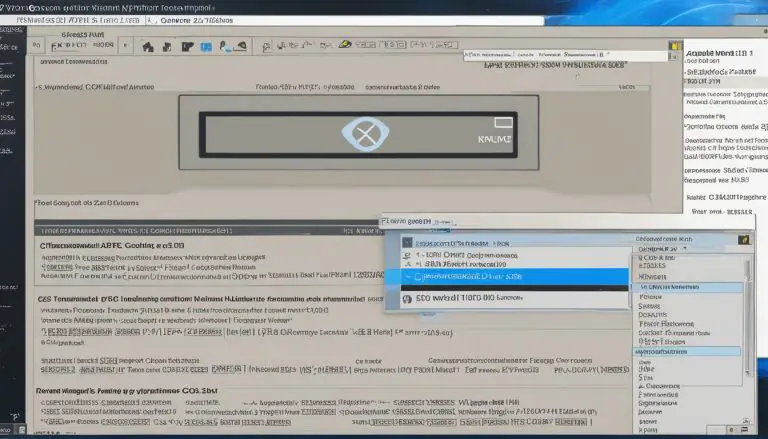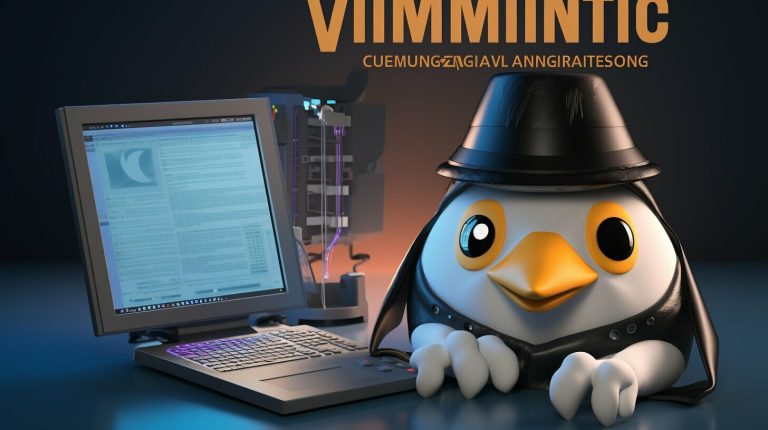Best Coding Challenges for Beginners: Our Top Picks for Learning
Starting your programming journey can feel overwhelming. Where do you begin? We believe hands-on practice is the most effective method for building real-world skills. This is where practical exercises come into play.
These exercises offer a structured path from simple tasks to complex algorithms. They are designed for learners at any stage. You start with foundational problems and gradually advance to more difficult ones.
The goal is not just to memorize syntax. It’s about developing logical thinking and problem-solving strategies. You learn to apply your knowledge in diverse situations, which is crucial for technical interviews and daily work.
Our curated selection focuses on educational value. We have chosen tasks that progressively build competency in programming fundamentals. Consistent practice builds the confidence needed to tackle unfamiliar problems independently.
Key Takeaways
- Hands-on exercises provide a practical pathway for developing programming skills.
- They help bridge the gap between theoretical knowledge and real-world application.
- A structured approach allows you to start simple and advance to complex problems.
- The focus is on building logical thinking and problem-solving strategies, not just syntax.
- Regular practice builds the muscle memory and confidence essential for independent coding.
- These tasks are valuable for both foundational learning and technical interview preparation.
Introduction to Coding Challenges
The most effective path to mastering computer programming involves tackling structured problem-solving tasks. We define these exercises as carefully designed scenarios that test and improve specific technical abilities. They transform abstract concepts into tangible applications.
These interactive tools serve as bridges between theoretical knowledge and real-world software development. Whether you’re learning JavaScript or any other language, the approach remains valuable. The practice coding format adapts to various programming environments.
Coding challenges appear in multiple formats, from simple algorithm implementations to complex system designs. Each format targets different aspects of programming competency. The industry widely uses them for education, interview preparation, and skill assessment.
Traditional learning methods often lack immediate feedback, but these exercises provide measurable progress through successful code execution. They create a safe space for experimentation where mistakes become learning opportunities. Debugging errors and iterating solutions builds essential problem-solving skills.
Modern platforms enhance the experience with supportive communities and discussion forums. Learners can explore multiple solution approaches, moving beyond solitary practice. This collaborative way of developing skills accelerates the learning process significantly.
Why Coding Challenges Matter for Beginners
The transition from learning syntax to actual problem-solving represents a critical milestone. We believe practical exercises provide the essential bridge between theoretical knowledge and real-world application. This hands-on approach transforms abstract concepts into tangible skills.
Learning Through Practical Experience
These exercises create immediate feedback loops that reinforce learning. When you see your code execute successfully, it builds confidence and demonstrates the direct connection between effort and results. This tangible progress is particularly motivating for new learners.
The process naturally develops debugging abilities as you encounter errors. Researching solutions and troubleshooting independently becomes an organic part of the learning journey. Each challenge presents opportunities to analyze problems from different angles.
This method exposes you to diverse scenarios and solution strategies. You begin recognizing patterns across various problems, expanding your programming toolkit. The iterative nature of attempting, refining, and succeeding builds resilience that mirrors real-world development.
Ultimately, practical exercises teach not just how to write code, but when and why to apply specific techniques. This deeper understanding separates competent programmers from those who merely memorize syntax. The skills developed through this approach serve you throughout your programming career.
Fundamentals for Programming Success
Mastering fundamental programming elements creates a strong base for tackling more advanced technical challenges. We believe a solid understanding of core concepts is essential before diving into complex problem-solving scenarios.
Programming Basics Overview
Every programming journey begins with essential building blocks. Variables store different types of data like text, numbers, and boolean values. Control structures guide program flow through conditional statements and loops.
Functions group reusable code segments, while arrays and collections organize information efficiently. Understanding input-processing-output patterns forms the foundation of most programming tasks.
These basics help you map solution steps before writing any code. They teach you to analyze requirements and identify edge cases systematically.
Choosing the Right Language
Selecting an appropriate programming language significantly impacts your learning experience. Python offers beginner-friendly syntax and excellent readability. JavaScript enables interactive web development with immediate visual feedback.
Java provides robust back-end capabilities, while C++ delivers deeper computer science understanding. We recommend mastering one language thoroughly before exploring others.
This focused approach builds genuine proficiency rather than superficial familiarity. Your first language choice should align with your learning goals and project interests.
Exploring the Best Coding Challenges for Beginners
Developing true programming competency involves working through progressively challenging tasks. We have curated a comprehensive selection of problem-solving exercises specifically designed for newcomers. Our list organizes these activities by difficulty level and learning objectives.
The selection criteria focused on tasks that teach fundamental programming concepts while remaining accessible. These problems cover essential patterns including input/output operations, string manipulation, and logical reasoning. Each exercise builds upon skills developed in previous challenges.
We emphasize that these activities are language-agnostic in concept. They can be implemented in any programming language, making them universally valuable. This approach creates a scaffolded learning experience that reinforces concepts through repetition.
The organizational structure progresses from simple starter tasks through logic puzzles to more advanced algorithmic problems. This prepares readers for detailed descriptions in subsequent sections. For additional practice options, explore our comprehensive collection of programming exercises.
This section serves as a transition from theoretical fundamentals to practical application. The carefully selected problems provide opportunities to practice and improve skills through progressively complex projects.
Starter Coding Tasks: Hello World and Simple Math
Every programming journey begins with foundational exercises that build confidence through immediate success. We start with basic tasks that introduce core concepts while delivering satisfying results quickly. These initial projects teach essential skills that form the building blocks for more complex work.
Hello World Variations and Customizations
The classic hello world program serves as the traditional first step in any language. This simple code outputs text to the screen, verifying your development environment works correctly. Beyond the basic version, creative variations demonstrate programming flexibility.
You can personalize messages with different languages like Spanish “Hola Mundo” or French “Bonjour le monde.” Adding multiple messages or creating ASCII art introduces basic output formatting. These customizations make the exercise more engaging while teaching string manipulation fundamentals.
Sum of Two Numbers and Converting Minutes to Seconds
Mathematical operations provide practical applications for beginner programmers. The sum of two numbers task teaches input handling and arithmetic operations. Users enter values, and the program displays their total.
Converting minutes to seconds introduces unit conversion concepts through simple multiplication. This exercise reinforces mathematical thinking in programming contexts. Both tasks establish patterns you’ll use repeatedly when working with data transformation, similar to concepts you might encounter in Go programming.
We provide implementation examples in Python and JavaScript to show syntax differences. These starter exercises teach variable declaration, user input, and output formatting—essential skills for all subsequent programming work.
Engaging Logic and String Puzzles
Moving beyond basic syntax, we encounter problems that test our ability to think algorithmically. These exercises combine mathematical reasoning with practical text manipulation skills.

They develop the critical thinking needed for complex programming tasks. This approach builds a foundation for more advanced concepts like recursion and data structure operations.
The FizzBuzz Challenge Explained
The FizzBuzz problem is a classic interview question that evaluates fundamental programming skills. It requires counting from 1 to 100 while applying specific rules for multiples.
Numbers divisible by 3 print “Fizz,” multiples of 5 display “Buzz,” and numbers divisible by both show “FizzBuzz.” The modulo operator (%) is essential for checking divisibility in this challenge.
We implement this using loops and conditional statements. The logical structure remains consistent across languages like Python and JavaScript.
Palindrome Checker Insights
Palindrome checking teaches essential string manipulation techniques. A palindrome reads the same forward and backward, like “racecar” or “madam.”
This exercise involves reversing strings and comparing them to originals. It practices character iteration and decision-making in code.
Different languages offer various approaches for this task. Python uses slice notation while JavaScript employs split-reverse-join methods.
Mastering Word and Array Challenges
Text processing forms a core component of many software applications. We now explore intermediate-level exercises that build upon basic string manipulation skills. These tasks introduce more complex data processing concepts essential for real-world programming.
Finding the Longest Word
The “Find the Longest Word” challenge is an excellent exercise for practicing array iteration. It requires writing a function that analyzes a sentence to identify the word with the most characters.
For example, in the sentence “The quick brown fox jumped over the lazy dog,” the correct output is 6, corresponding to the word “jumped.” The solution involves splitting the input string into an array of individual words.
You then iterate through this array, comparing the length of each word to track the maximum value found. This process teaches fundamental skills for text processing applications used in data analysis and web development.
Techniques for Effective String Manipulation
Effective solutions utilize various programming paradigms. Traditional approaches use for loops to iterate through the word array. Modern methods might employ functional programming techniques like reduce().
Both methods achieve the same result, demonstrating different ways of thinking about the problem. Essential string operations include splitting on delimiters like spaces and accessing the length property.
We emphasize considering edge cases such as empty strings or inputs with multiple words of equal length. Developing robust solutions in a development environment like Visual Studio Code prepares you for complex text processing tasks.
Tackling Advanced Algorithm Challenges
As learners progress beyond foundational exercises, they encounter sophisticated problems that test algorithmic thinking. We introduce two powerful challenges that develop systematic problem-solving skills. These exercises represent the next level in computational mastery.
Sudoku Solver Using Backtracking
The Sudoku puzzle provides an excellent platform for understanding backtracking algorithms. This method systematically explores possible solutions while respecting constraints. When a path proves invalid, the algorithm retreats and tries alternatives.
We implement validation functions to check number placements in rows, columns, and 3×3 squares. The recursive solution attempts valid numbers in empty cells. This approach teaches efficient problem decomposition and constraint management.
Binary Search Tree Operations Simplified
Binary Search Trees (BSTs) organize data for rapid retrieval. Each node contains a value with left children holding smaller numbers. Right children store larger values, enabling logarithmic search times.
Key operations include inserting values while maintaining tree properties. Search functions traverse the structure efficiently. We also cover traversal methods like pre-order and in-order sequencing.
These advanced challenges build recursive thinking essential for computer science. They prepare programmers for complex coding scenarios encountered in professional environments.
Prime Numbers and Their Coding Challenges
Mathematical concepts provide excellent opportunities for developing computational thinking skills through targeted exercises. Prime numbers—integers divisible only by 1 and themselves—appear frequently in computer science applications.
These special numbers have practical value in cryptography and security protocols. Working with primes teaches optimization techniques crucial for efficient programming.
Fast Prime Checking Methods
The Basic Prime Checker challenge requires implementing a function to determine primality. We can optimize this by checking divisibility only up to the square root.
Skipping even numbers after 2 significantly improves performance. This approach teaches important algorithmic thinking patterns.
Implementing the Sieve of Eratosthenes
The Sieve of Eratosthenes offers an efficient method for finding all primes up to a given limit. It works by systematically marking composite numbers in a boolean array.
Starting with 2, we mark all its multiples as composite. Then we move to the next unmarked number and repeat the process.
This clever approach is much faster than checking each number individually. It demonstrates how smart algorithms can solve problems efficiently.
Developing AI Strategies: Tic-Tac-Toe and Topological Sort
Advancing beyond intermediate exercises brings us to strategic implementations that simulate real-world decision-making. We now explore two sophisticated problems that combine multiple programming concepts into cohesive solutions.
Creating a Perfect Tic-Tac-Toe Game
Building an unbeatable Tic-Tac-Toe program teaches strategic thinking and game theory principles. The computer follows a hierarchical decision process when selecting moves.
First, it attempts to make a winning move. If no immediate win exists, it blocks the opponent’s potential victory. Finally, it chooses the optimal available position.
This approach ensures the AI never loses, achieving at minimum a draw. Implementation requires representing the 3×3 grid and tracking game state throughout play.
Understanding Topological Sorting in Projects
Topological sorting organizes tasks with dependencies into a valid execution order. Think of making breakfast where you must toast bread before eating it.
This algorithm has practical applications in project management and build systems. It ensures each step happens only after its prerequisites complete successfully.
Writing a program for topological sort involves analyzing dependency graphs and producing linear sequences that respect all constraints.
Conclusion
The journey through programming exercises culminates in a transformed approach to problem-solving. We’ve demonstrated how structured tasks build essential skills progressively. This method creates a solid foundation for technical growth.
True programming success comes from developing logical thinking rather than memorizing syntax. Understanding when to apply different tools is more valuable than knowing every function. This understanding enables effective solutions to diverse problems.
Consistent practice remains crucial for mastering the process. These exercises serve as stepping stones to more complex projects. The field of computer programming offers endless opportunities for continued learning and skill development.
FAQ
What are programming exercises and how do they help?
How do I choose the right language to start with?
What is the purpose of a “Hello, World!” program?
Why is the FizzBuzz challenge so popular for interviews?
What are some effective techniques for string manipulation?
What is backtracking in algorithm challenges?
How does the Sieve of Eratosthenes work for finding prime numbers?
- About the Author
- Latest Posts
Mark is a senior content editor at Text-Center.com and has more than 20 years of experience with linux and windows operating systems. He also writes for Biteno.com





